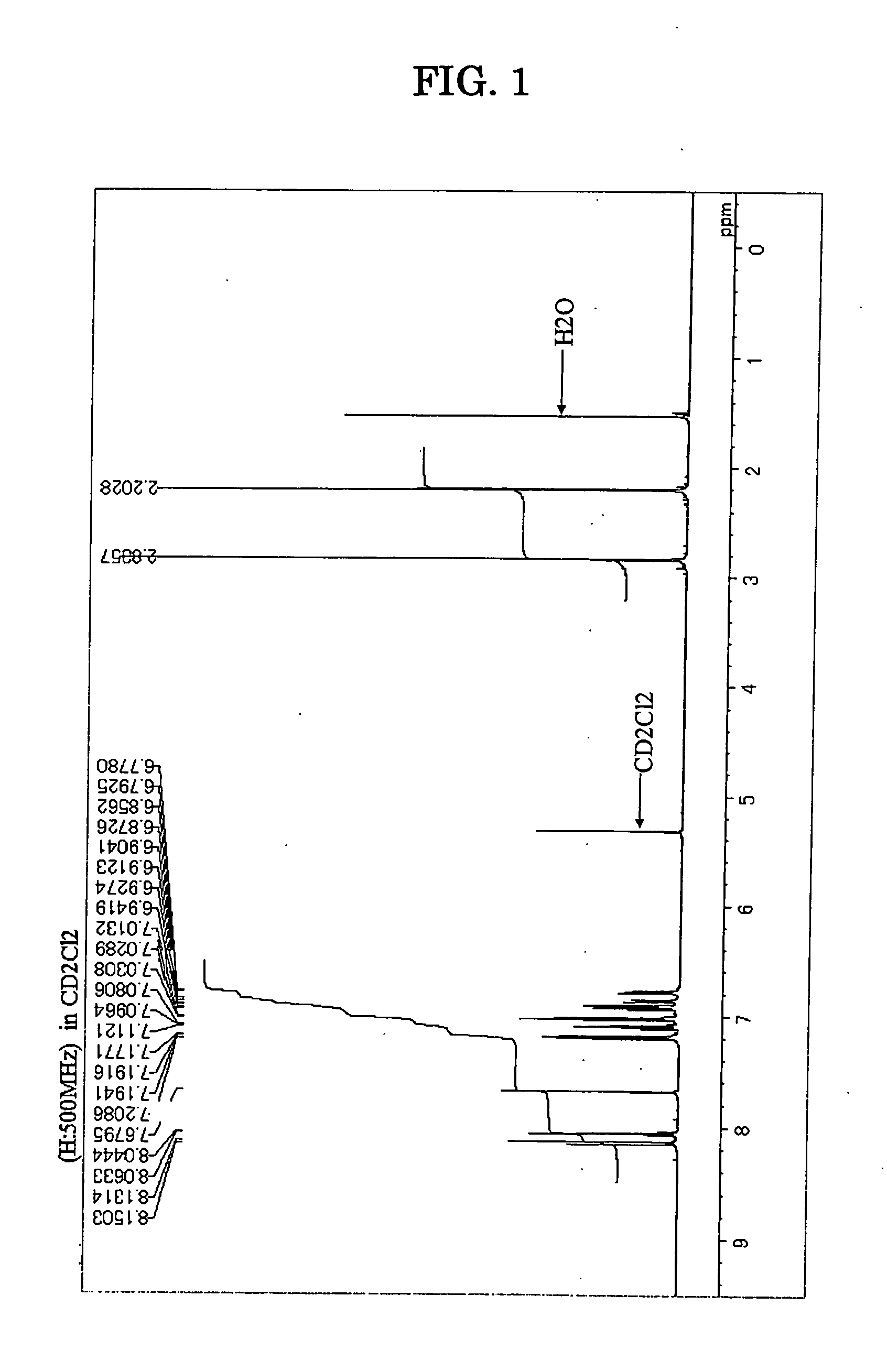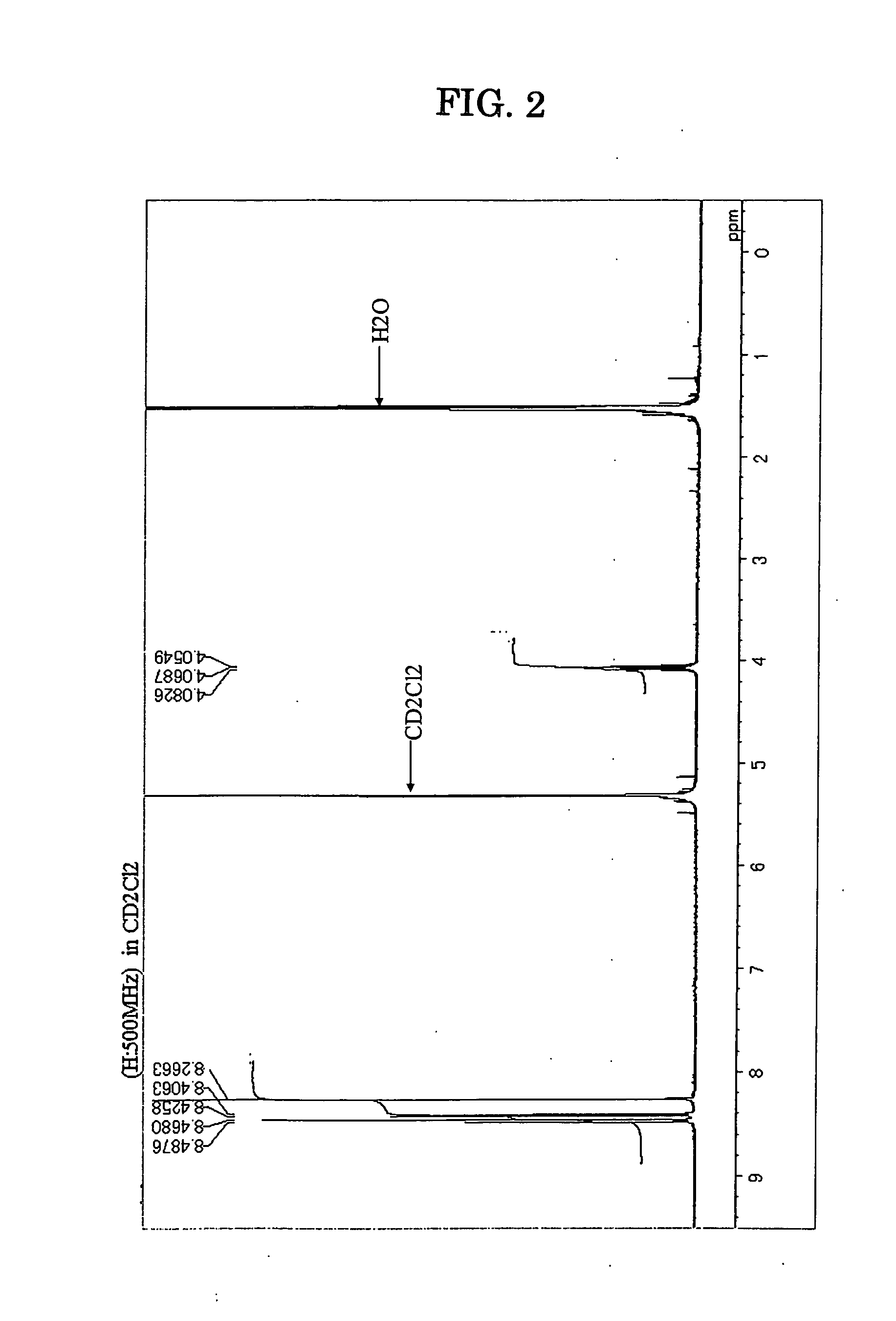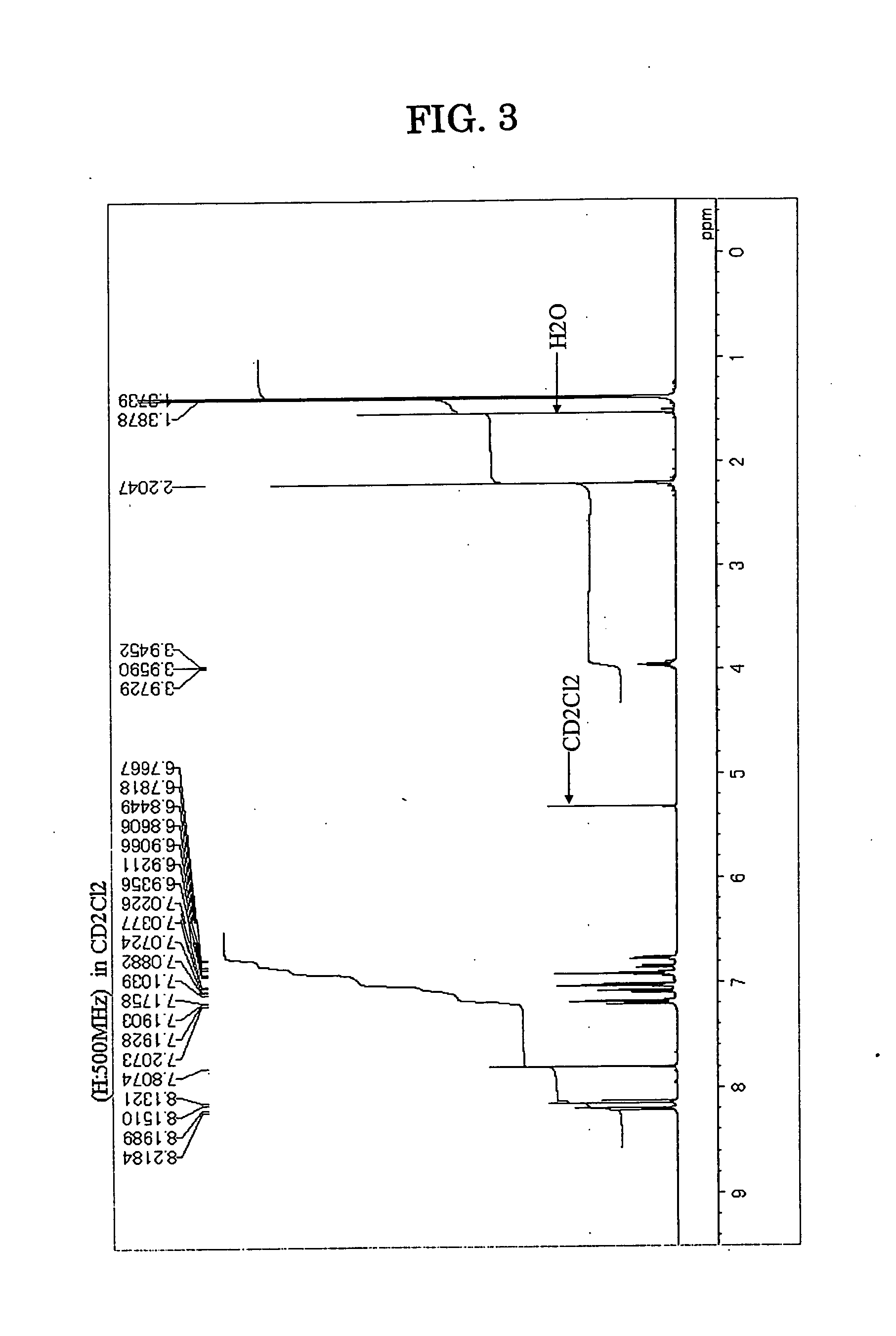Aromatic Amine Derivative, Organic Electroluminescent Element Employing the Same, and Process for Producing Aromatic Amine Derivative
a technology of organic electroluminescent elements and aromatic amines, which is applied in the direction of discharge tubes luminescnet screens, instruments, etc., can solve the problems of high driving voltage low luminance or light emission efficiency of conventional organic el devices, and inapplicability, etc., to achieve enhanced light emission efficiency, efficient preparation of aromatic amine derivatives, and long life
- Summary
- Abstract
- Description
- Claims
- Application Information
AI Technical Summary
Benefits of technology
Problems solved by technology
Method used
Image
Examples
synthesis example 1
Synthesis of Compound (D-3)
[0133] Under an atmospheric argon gas flow, 1,6-dimethyl-3,8-dibromopyrene in an amount of 3.0 g (7.7 millimole), m,m-ditolylamine in an amount of 3.4 g (18.5 millimole), palladium acetate in an amount of 0.03 g (1.5% by mole), tri-t-butylphosphine in an amount of 0.05 g (3% by mole), sodium-t-butoxide in an amount of 1.8 g (18.7 millimole) and dried toluene in an amount of 50 milliliter were placed into a three-neck flask equipped with a cooling pipe and having a capacity of 300 milliliter, and the resultant solution was stirred with heating at a temperature of 110° C. for 8 hours. After the completion of the reaction, the resultant solution was passed through a silicagel short column, and after concentrating under a reduced pressure, a precipitated crystal was separated by filtration. The crystal washed with the use of 50 milliliter of toluene and 100 milliliter of methanol, and as a result, 4.5 g of pale yellow powder was obtained. The pale yellow powd...
synthesis example 2
Synthesis of Compound (D-38)
(1) Synthesis of Intermediate Material (1,6-diisopropylpyrene)
[0134] Under an atmospheric argon gas flow, 1,6-dibromopyrene in an amount of 20 g (55.6 millimole), isopropylmagnesiumbromide in an amount of 117 milliliter [117 millimole, 1 mole / litter (THF: tetrahydrofuran)], (diphenylphosphino ferrocene)palladium(II)dichloride in an amount of 2.27 g (5% by mole) and dried dioxane in an amount of 130 milliliter were placed into a three-neck flask equipped with a cooling pipe and having a capacity of 500 milliliter, and the resultant solution was stirred with heating at a temperature of 90° C. for 8 hours. After the completion of the reaction, adding 100 milliliter of dilute hydrochloric acid, an organic layer was separated and concentrated under a reduced pressure. Then, the organic layer was passed through a silicagel short column, and after concentrating under the reduced pressure again, a precipitated crystal was separated by filtration and as a result...
synthesis example 3
Synthesis of Compound (D-39)
[0137] Under an atmospheric argon gas flow, 1,6-diisopropyl-3,8-dibromopyrene in an amount of 3.0 g (6.7 millimole), m,m′-ditolylamine in an amount of 3.2 g (16.2 millimole), palladium acetate in an amount of 0.02 g (1.5% by mole), tri-t-butylphosphine in an amount of 0.04 g (3% by mol), sodium-t-butoxide in an amount of 1.6 g (16.6 millimole) and dried toluene in an amount of 75 milliliter were placed into a three-neck flask equipped with a cooling pipe and having a capacity of 300 milliliter, and the resultant solution was stirred with heating at a temperature of 110° C. for 8 hours. After the completion of the reaction, the resultant solution was passed through a silicagel short column, and after concentrating under a reduced pressure, a precipitated crystal was separated by filtration. The crystal washed with the use of 50 milliliter of toluene and 100 milliliter of methanol, and as a result, 4.5 g of pale yellow powder was obtained. The pale yellow ...
PUM
| Property | Measurement | Unit |
|---|---|---|
| Percent by mass | aaaaa | aaaaa |
| Weight | aaaaa | aaaaa |
| Electric charge | aaaaa | aaaaa |
Abstract
Description
Claims
Application Information
 Login to View More
Login to View More - R&D
- Intellectual Property
- Life Sciences
- Materials
- Tech Scout
- Unparalleled Data Quality
- Higher Quality Content
- 60% Fewer Hallucinations
Browse by: Latest US Patents, China's latest patents, Technical Efficacy Thesaurus, Application Domain, Technology Topic, Popular Technical Reports.
© 2025 PatSnap. All rights reserved.Legal|Privacy policy|Modern Slavery Act Transparency Statement|Sitemap|About US| Contact US: help@patsnap.com



